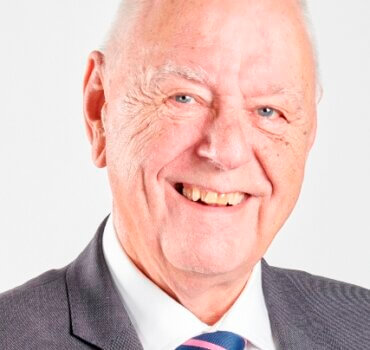Waipā could reduce from 11 to eight the number of elected councillors sitting around the debating table.
The move, subject to public feedback is understood to have gathered momentum under mayor Susan O’Regan in a drive for “quality” representation and was boosted by an Elections NZ presentation at a workshop this week.
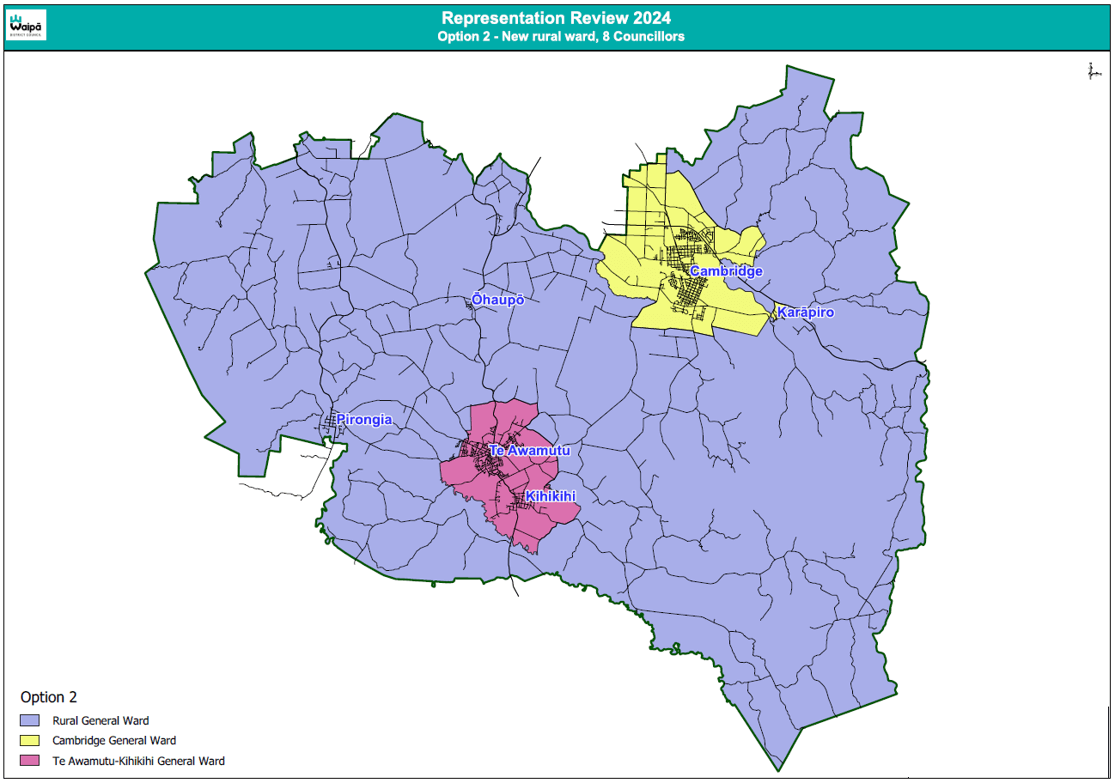
Option 2 – New rural ward, eight councillors.
A nearly six per cent increase in district population requires a representation review while behind the scenes some in council want to get more professional people standing rather than the current mix of retired, semi-retired or self-employed.
The last substantial review happened in 2021 when councillor numbers were reduced by two – with losses in Cambridge and Te Awamutu-Kihikihi, the merger of two rural wards with the same numbers and a new Māori ward.
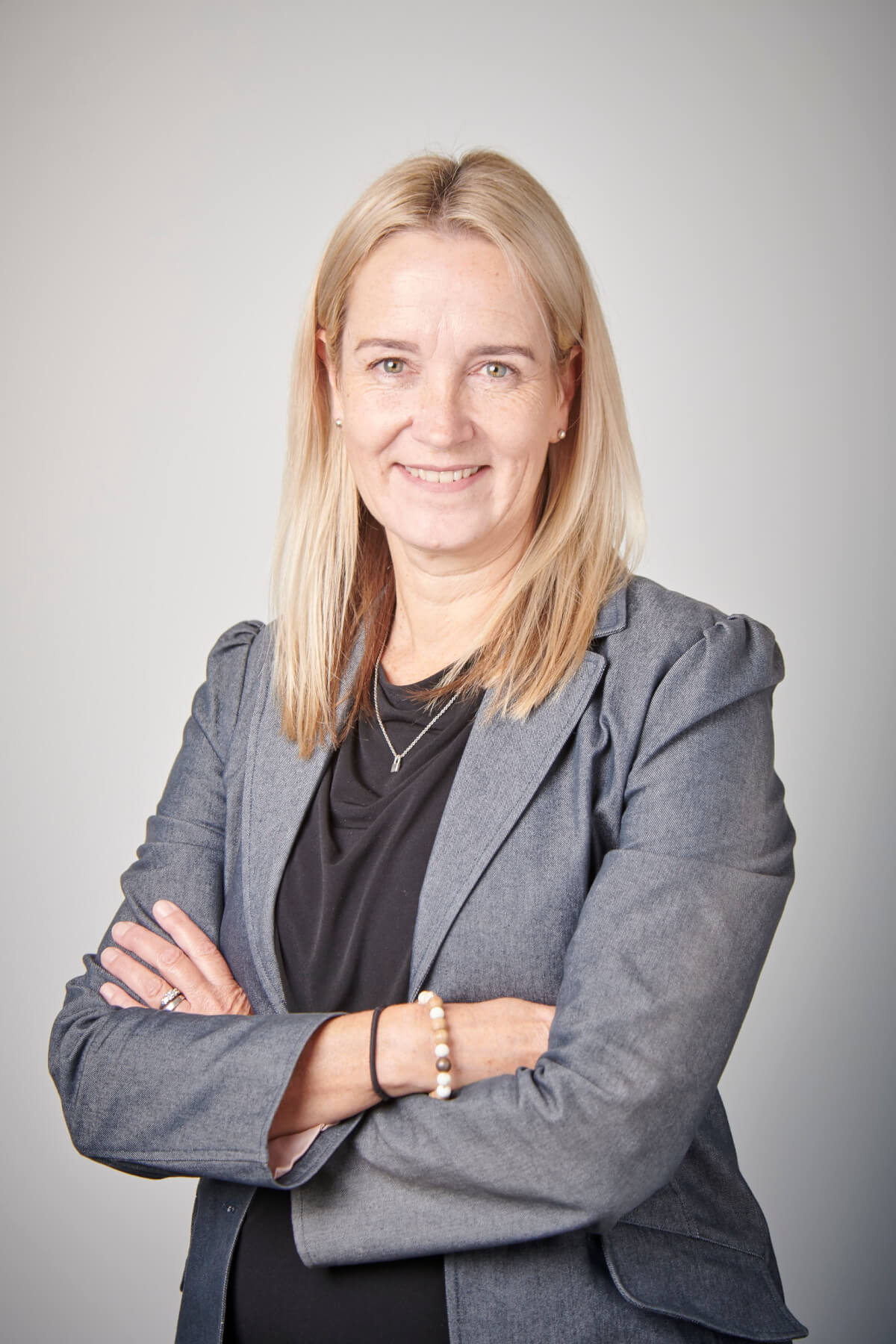
Susan O’Regan
“My challenge to elected members, are we honestly saying this format is fit for purpose going forwards,” said O’Regan.
“We need to be brave, and we need to be leaders. We’ve never been followers in Waipā, we’ve always been leaders.”
The challenge was whether the model was fit for purpose, she said.
Effective representation was not necessarily more numbers.
“It’s quality that gets effective representation,” she said.
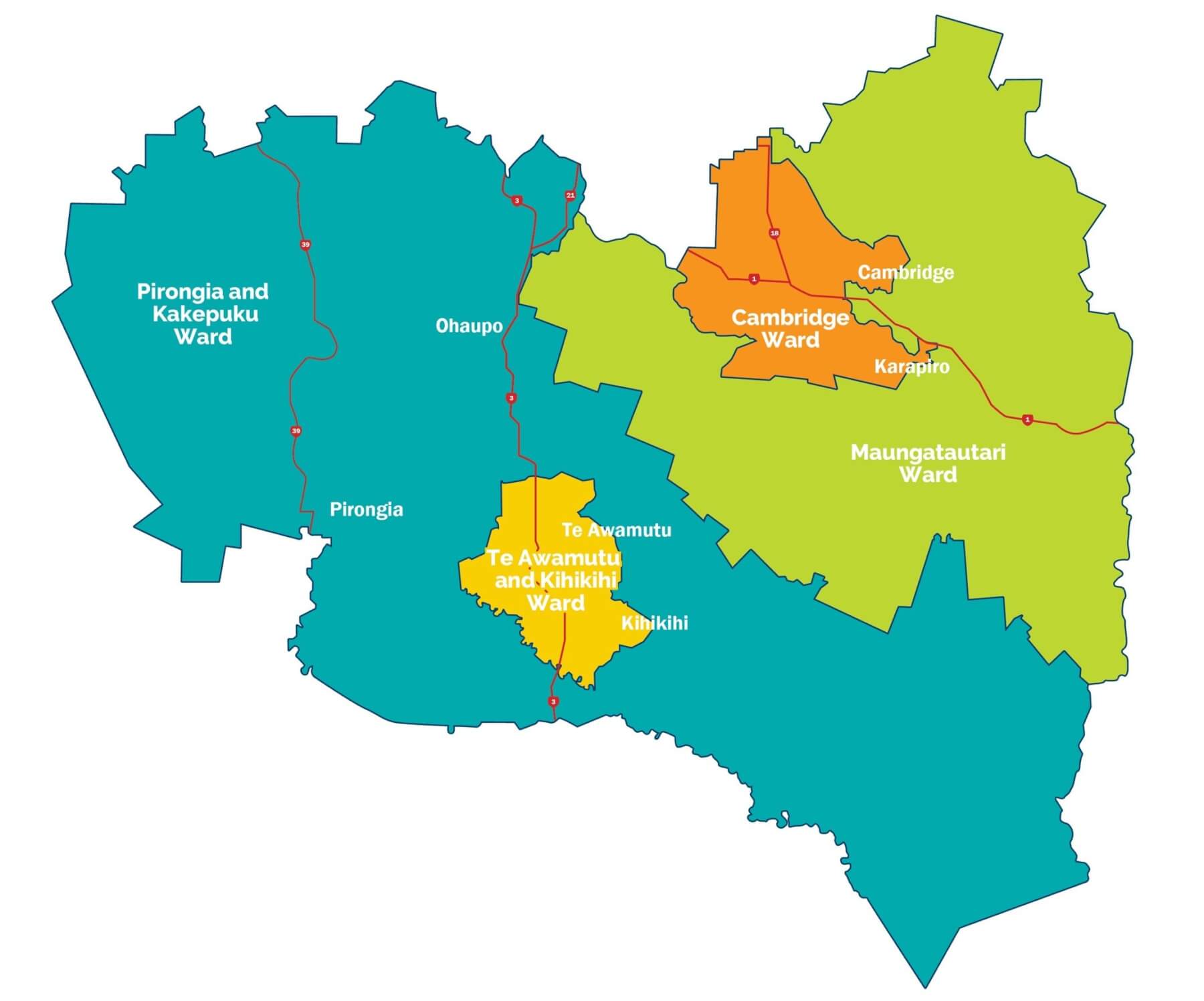
Waipā District Council comprises a mayor (elected at large) and 11 councillors, elected from five wards: Pirongia-Kakepuku General Ward (2 councillors), Cambridge General Ward (4 councillors), Maungatautari General Ward (1 councillor), Te Awamutu-Kihikihi General Ward (3 councillors), Waipā Māori Ward (1 councillor).
Cr Clare St Pierre agreed saying the size of the role had changed. Local government was in an evolving space which the council needed to respond to.
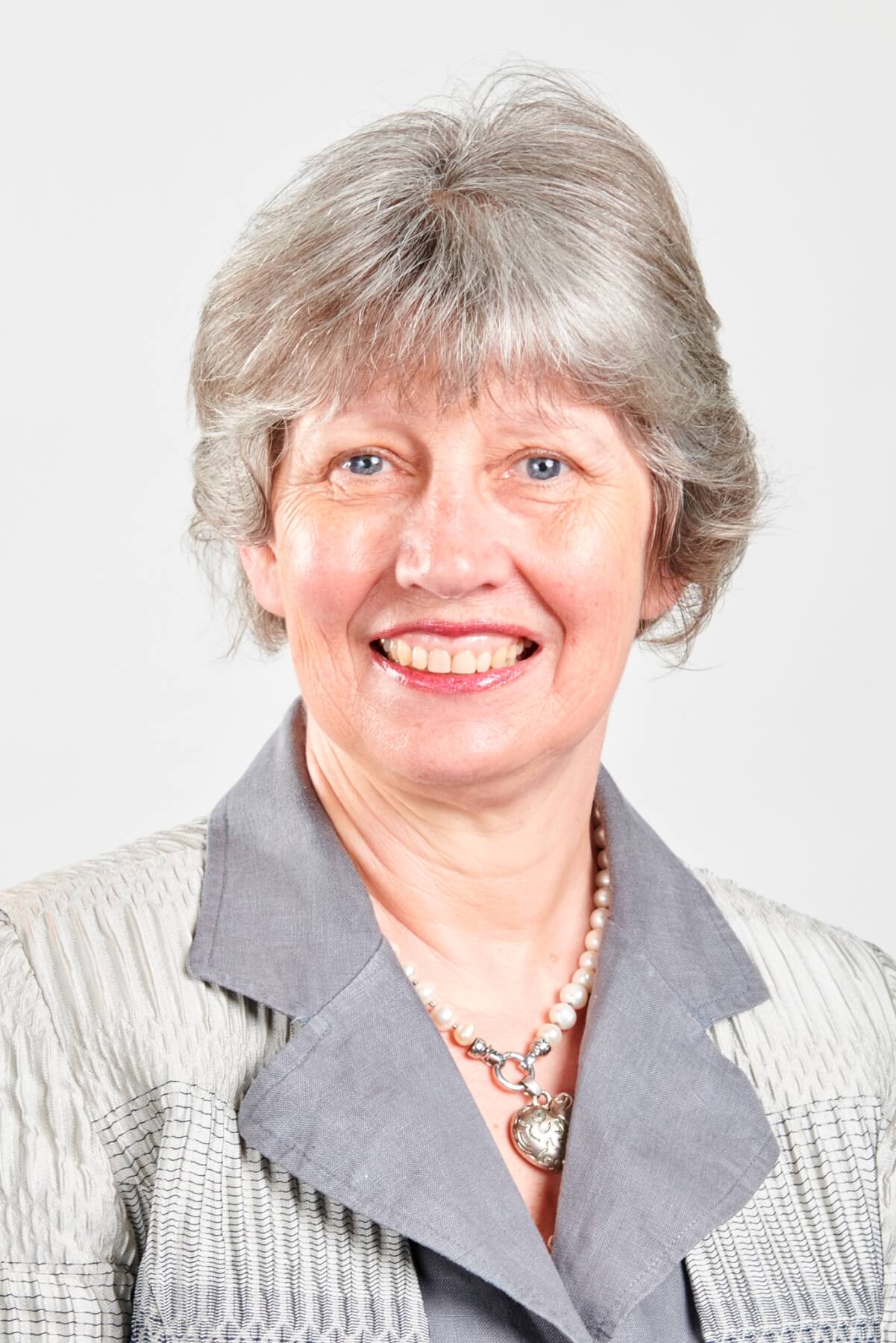
Clare St Pierre
Residents will be asked to consider sticking with the status quo – with boundary adjustments – 11 councillors from five wards.
Other options would be to reduce councillors by three to eight – creating a new mega rural ward from Pirongia-Kakepuku and Maungatautari, three to two councillors for Te Awamutu-Kihikihi, four to three for Cambridge and one Māori ward.
Waipā opposes the disestablishment of its Māori ward as proposed by the government.
Two other suggestions, which Elections NZ’s Stephen Hill said would struggle to meet the community of interest test, could be an east-west or north-south split and losing three councillors. Councillors opted against those being put to the community and any suggestion community boards should go.
The remuneration pool would not change – it is currently $544,506 set independently and spread among 11 councillors with varying amounts determined on roles and responsibilities. Deputy mayor Liz Stolwyk gets $66,835 and the lowest paid Roger Gordon $41,280.
The mayor’s salary, and community board members, also set externally by a different process, cannot be changed.
O’Regan gets $145,391 a year, the two chairs get $19,327 and $18,662 a year while members get $9663 and $9331.
Engagement will start next month, a second workshop held on June 25 and a council meeting on July 30 to resolve an initial proposal.
Formal consultation, hearings and deliberations would continue through August and September with a final proposal adopted by mid November.
- Te Awamutu councillor Lou Brown, Cambridge councillors Philip Coles and Roger Gordon all opposed going out for public consultation.
- Lou Brown
- Philip Coles
- Roger Gordon





